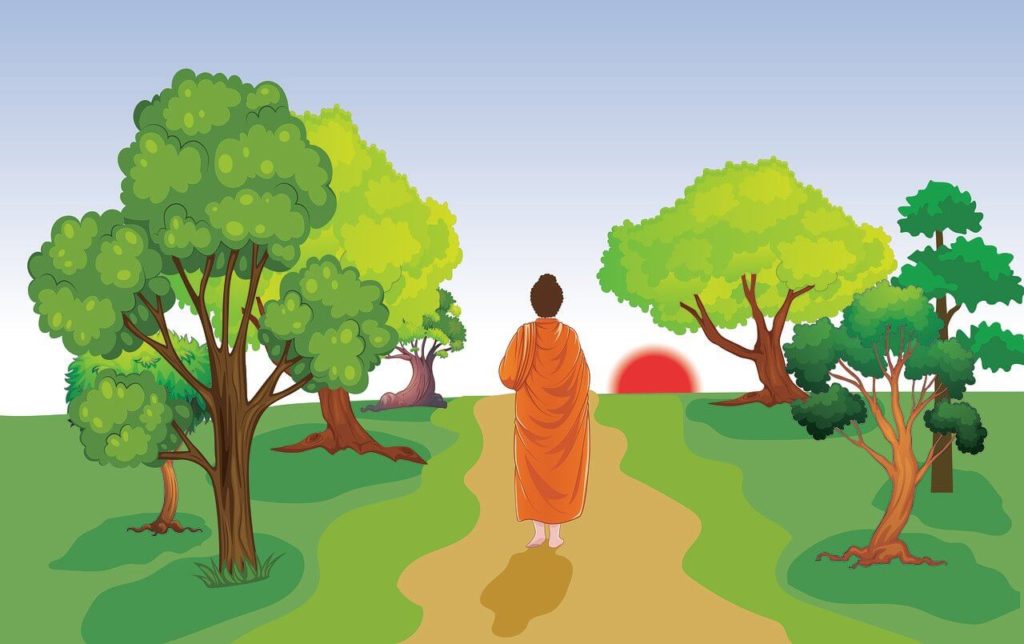Have you heard of using Yoga Nidra for sleep, or “Sleep Yoga?” Also called Yogic Sleep, or NSDR (Non Sleep Deep Relaxation.)
People use Yoga Nidra primarily for deep relaxation, stress reduction, and improving sleep quality, often complementing their meditation or wellness practices. It can also help enhance self-awareness and promote emotional well-being.
Yoga Nidra for sleep really is pure magic, did you know that one 30-minute session can equal about 4 hours of sleep? Sounds crazy, but it’s true.
Yoga Nidra can also be used to go to sleep quicker and easier, stay asleep longer, and improve mental health.
Find out how to get better sleep with Yoga Nidra below. (Plus lots of other benefits!)
- What is Nidra Yoga?
- History Of Yoga Nidra For Sleep
- Who Teaches Yoga Nidra Classes?
- Benefits of Yoga Nidra For Sleep
- How Does Yoga Nidra For Sleep Work?
- Is Yoga Nidra As Powerful As Real Sleep?
- Brain Waves In Yoga Nidra
- How Do You Do Yoga Nidra For Sleep?
- Best Yoga Nidra For Sleep Podcasts
- Best Yoga Nidra For Sleep On YouTube
What is Nidra Yoga?
Yoga Nidra is not your typical “yoga.” There is no movement or really any exertion involved. Yoga Nidra is typically performed lying comfortably on your back in Savasana Pose.
All you need is someone to guide you through a Yoga Nidra Script. Your guide will take you through a class that can last anywhere from 10 minutes to an hour.
During the entire class, you will be lying on your back and the goal is to actually not fall asleep but to stay in an aware state of ultimate relaxation. During Yoga Nidra, you may find yourself in limbo an awake and sleep state.
History Of Yoga Nidra For Sleep
Yoga Nidra’s origins can be traced back thousands of years, and it has evolved over time to become the deeply relaxing and therapeutic practice known today.
The Buddhists said that Yoga Nidra is a state in which Buddhas may access hidden knowledge. Cool!
The concept of Yoga Nidra is deeply rooted in traditional yogic texts and practices. Elements of Yoga Nidra can be found in ancient scriptures like the Upanishads and the Mahabharata, where yogis explored states of deep meditation and conscious relaxation.
Yoga Nidra, as it is practiced today, owes much to the modern yogi Swami Satyananda Saraswati. In the mid-20th century, Swami Satyananda adapted and popularized the practice, making it accessible to a broader audience. He founded the Bihar School of Yoga and introduced Yoga Nidra as a systematic method for relaxation, meditation, and self-inquiry.
There is also influence from the Tantric tradition, which emerged around the 6th century CE and played a significant role in the development of Yoga Nidra. Tantric practitioners sought to harness and transform various energies within the body and mind, and Yoga Nidra became a method for achieving these states of awareness.
Yoga Nidra was mentioned without context in the ancient Hindu text Mahabharata. We are not sure what or how “yoga nidra” was practiced in the past.
[The Ocean] becomes the bed of the lotus-naveled Vishnu when at the termination of every Yuga that deity of immeasurable power enjoys yoga-nidra, the deep sleep under the spell of spiritual meditation.
— Mahabharata, Book 1, section XXI
–Wikipedia
In recent years, Yoga Nidra has gained popularity outside of traditional yoga circles. It is now widely practiced for its stress reduction, sleep improvement, and general well-being benefits. Online platforms and mobile apps offer guided sessions, making it accessible to people worldwide.
Who Teaches Yoga Nidra Classes?
When seeking instruction in Yoga Nidra, it’s advisable to choose a qualified and experienced teacher who can guide you effectively through the practice and ensure a safe and beneficial experience.
Yoga Nidra can be taught by various individuals, including:
- Certified Yoga Instructors: Many certified yoga instructors offer Yoga Nidra as part of their classes or workshops, either in person or online. They may specialize in different yoga traditions or styles, such as Hatha, Kundalini, or Yoga Nidra itself.
- Meditation and Mindfulness Instructors: Some meditation and mindfulness teachers incorporate Yoga Nidra into their practices to promote relaxation and inner awareness.
- Psychologists and Therapists: Mental health professionals sometimes use Yoga Nidra as a therapeutic tool to help clients manage stress, anxiety, and trauma.
- Online Platforms and Apps: Numerous online platforms and mobile apps offer guided Yoga Nidra sessions led by experienced instructors, making it accessible to a wide audience.
- Self-Guided Practice: Once individuals become familiar with the technique, they can also practice Yoga Nidra on their own using recorded scripts or written instructions.
Benefits of Yoga Nidra For Sleep
Yoga Nidra has many benefits beyond just improving sleep. The benefits are similar to those of a regular meditation practice.
One study showed that Yoga Nidra is particularly beneficial for adolescents.
Here’s a list of how Yoga Nidra can better your life.
- Reduced anxiety and stress
- Helps with depression
- Help regulate blood sugar
- Improved menstrual symptoms
- Effective for PTSD
- Helps reduce insomnia
- Increased sense of calm
- Reduced muscle tension
- Easier time falling asleep and staying asleep
- Feeling refreshed in the morning
- Improved concentration and focus
- Enhanced mind-body connection
- Easily accessible
To experience the full benefits of Yoga Nidra for sleep, it’s important to practice it regularly, ideally as part of a bedtime routine. Over time, you may find that it not only improves your sleep but also enhances your overall quality of life by reducing stress and promoting relaxation.
How Does Yoga Nidra For Sleep Work?
Yoga Nidra works by taking the mind and body through a trip down into a semi-state of sleep. Through this journey, the brain passes through the same brain waves that we experience when we are sleeping.
That’s why Yoga Nidra is so powerful, it gives us the same physical and chemical rest as sleep in a short period of time.
Yoga Nidra can be almost as restorative as a few hours of real sleep due to the transition of brain waves. But keep in mind Yoga Nidra is made for relaxation and improving sleep, not outright replacing it.
Some people claim that 30 minutes to one hour of yoga nidra can be as restorative as 4 hours of real sleep.

Is Yoga Nidra As Powerful As Real Sleep?
Yoga Nidra is a powerful practice for relaxation, stress reduction, and improving sleep quality, but it is not a replacement for real sleep. While Yoga Nidra can have profound effects on the mind and body, it doesn’t provide the same physiological and cognitive benefits as actual sleep.
Here’s how Yoga Nidra compares to real sleep:
Restorative Sleep
Real sleep is essential for the body to undergo various restorative processes, such as tissue repair, muscle growth, immune system support, and memory consolidation. Yoga Nidra, while deeply relaxing, does not fulfill these functions to the same extent as sleep.
Physical Restoration
During deep sleep, the body experiences changes in hormone production, temperature regulation, and blood pressure. These processes are crucial for maintaining overall health, and Yoga Nidra does not replicate them.
Cognitive Benefits
Sleep plays a vital role in memory consolidation, problem-solving, and creativity. While Yoga Nidra can enhance focus and mental clarity, it doesn’t provide the same cognitive benefits as a full night’s sleep.
Energy Restoration
Sleep replenishes energy levels, allowing you to wake up feeling refreshed and rejuvenated. Yoga Nidra can reduce fatigue and promote relaxation, but it doesn’t replace the need for sleep when it comes to sustaining energy throughout the day.
Emotional Balance
Both sleep and Yoga Nidra can help regulate emotions and reduce stress, but they do so through different mechanisms. Sleep has a more comprehensive impact on emotional well-being, helping to stabilize mood and manage emotional challenges.
While Yoga Nidra can be a valuable tool for managing stress, promoting relaxation, and improving sleep quality, it cannot replace the need for sufficient, restorative sleep.
Brain Waves In Yoga Nidra
Yoga Nidra works on multiple levels, including physical relaxation, mental relaxation, and emotional balance. It engages the parasympathetic nervous system, which is responsible for the “rest and digest” response, helping to counteract the stress response that can interfere with sleep.
Studies show that during a yoga nidra practice, advanced practitioners consciously enter non-REM sleep, exhibiting delta waves on an EEG.
However, most novice practitioners should expect to enter the theta and alpha waves, which is a state of deep relaxation.
Each brain wave frequency is responsible for various activities in our lives. See this list below to find out what each wave is responsible for.
- Gamma Waves – 25 – 100 Hz – This is the faster brain wave that is responsible for quick actions and thinking.
- Beta Waves – 12 – 30 Hz – This is the frequency at which we normally think and solve problems.
- Alpha Waves 8 – 12 Hz – In this frequency, we are generally relaxed and calm.
- Theta Waves 3 – 8 Hz – Associated with sleep and very deep meditation.
- Delta .5 – 3 Hz – These slowest brain waves happen when we are in very deep sleep.
Related Posts: Breakthrough Mantras For Transcendental Meditation 🙏
Amazing Benefits of Headstands in Yoga
How Do You Do Yoga Nidra For Sleep?
Yoga Nidra for sleep really is quite simple, all you have to do is lie down in a comfortable position and listen to the instructions from your guide.
Since you will be in Savasana pose, you can do yoga nidra lying in your bed just before going to sleep. You can also add a yoga bolster or pillow underneath the knees.
Here’s how a Yoga Nidra session typically goes:
Preparation
Find a quiet and comfortable place where you won’t be disturbed. Wherever you are, you want to let your body be completely comfortable so there are no physical distractions.
Intention Setting
The practice begins with setting a specific intention or Sankalpa, which is a positive statement or affirmation that you wish to manifest in your life. This intention should be something related to sleep or relaxation, such as “I will sleep peacefully tonight.”
Body Scan
The Yoga Nidra guide (either a live instructor or a recording) will lead you through a systematic body scan. This involves mentally focusing on different parts of your body and consciously relaxing them. This process helps release physical tension and prepares the body for deep relaxation.
Breath Awareness
You’ll be guided to pay attention to your breath. Focusing on your breath helps calm the mind and anchor your awareness in the present moment.
Visualization
During the practice, you may be led through a series of guided visualizations. This could involve imagining peaceful scenes or scenarios that promote relaxation. Visualization can help divert your mind from racing thoughts and worries, which can interfere with sleep.
Awareness of Sensations
You’ll be encouraged to become aware of any sensations or feelings that arise in your body, such as warmth, heaviness, or tingling. This heightened awareness helps deepen the state of relaxation.
Mantras and Affirmations
The instructor may introduce mantras or affirmations at various points in the practice to reinforce positive beliefs or intentions related to sleep.
Deep Relaxation
As the practice continues, you’ll gradually enter a state of deep relaxation, similar to the border between wakefulness and sleep. At this point, your body is completely relaxed, and your mind is calm and receptive.
Sankalpa Reminder
Toward the end of the session, you’ll revisit your initial intention (Sankalpa). This reinforces the positive message in your subconscious mind.
Completion
The practice typically concludes with a gradual return to a state of wakefulness. You may be guided to wiggle your fingers and toes or gently bring your awareness back to the present moment.
Consistent practice of Yoga Nidra for sleep can train your body and mind to enter this state of deep relaxation more readily, making it easier to fall asleep and experience restorative sleep. It can also help break the cycle of insomnia and improve your overall sleep quality.
Best Yoga Nidra For Sleep Podcasts
There are plenty of free podcasts out there to help you get started with Yoga Nidra.
These podcasts below are available on Spotify, but you can also search on Apple Podcasts, Stitcher, or wherever you listen to podcasts.
Best Yoga Nidra For Sleep On YouTube
Have you tried Yoga Nidra? Does it help you sleep? Tell us about it below.



0 Comments